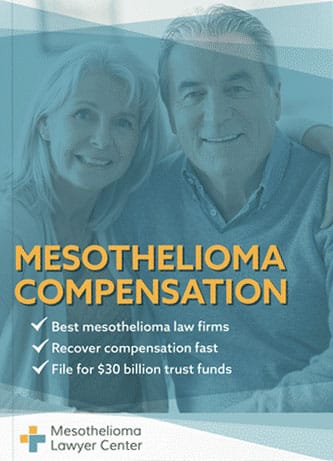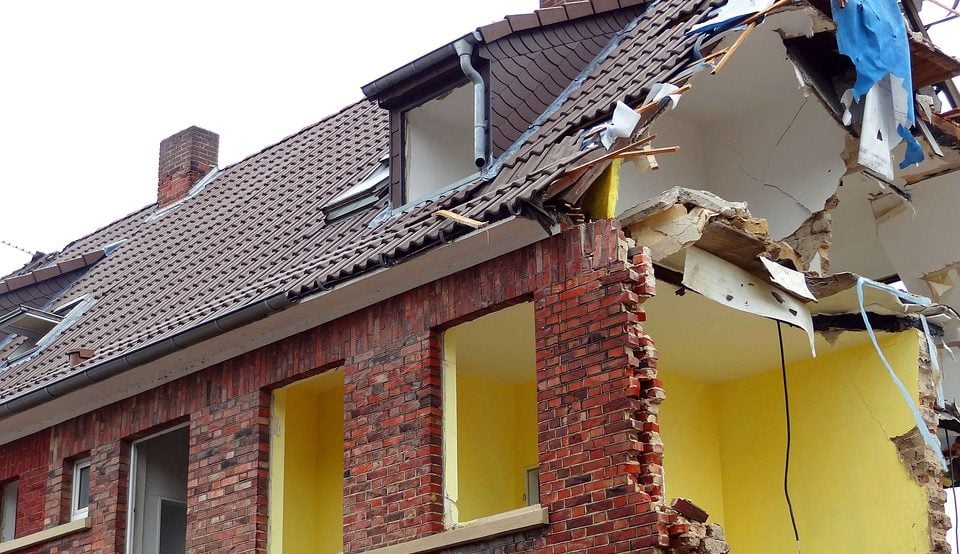Asbestos in the home is a major health risk during repairs and renovations. Asbestos materials are dangerous when disturbed and can cause exposure. Know where asbestos might be in the home and work with an abatement professional before doing any work.
If you or a loved one have been diagnosed with mesothelioma, asbestos-related lung cancer, or asbestosis, you may be eligible for substantial compensation. Fill out our form to receive our free Financial Compensation Packet. Our packet is loaded with information on experienced mesothelioma attorneys in your area, how to file a claim for asbestos trust funds, how to get paid in 90 days, and more.


FREE Financial Compensation Packet
- Info on law firms that will recover your HIGHEST COMPENSATION
- Learn how to get paid in 90 days
- File for your share of $30 billion in trust funds
Hidden Asbestos Hazards in Electrical Wiring and Residential Construction
Asbestos isn’t limited to insulation and floor tiles—it was also used in unexpected places like electrical wiring. In this short video, David Foster highlights the hidden dangers of asbestos in older residential construction materials, focusing on electrical components that may still be present in homes built before the 1980s.
You’ll learn why asbestos was used in wiring, where it might still be hiding, and why even minimal exposure can pose serious health risks. If you’re renovating or maintaining an older home, this is essential information for protecting yourself and others.
Why Is Asbestos Dangerous in Home Renovations?
Asbestos is dangerous when it is friable. Friable means it releases tiny fibers into the air. Anyone around the fibers can inhale or ingest them. Asbestos fibers in the body cause damage and can ultimately lead to very serious illnesses, including mesothelioma, asbestosis, and lung cancer.
Most homes at one time were built with asbestos materials. Many of those homes still contain original asbestos components. If those materials are in good shape, they don’t pose much risk.
If asbestos products in homes deteriorate or are disturbed by repairs and renovations, they can become friable and cause exposure. Working on asbestos materials in the home can be very dangerous for this reason.
Does My Home Have Asbestos?
Many people have no idea if their homes contain asbestos. As a general rule, if a home was built before the 1980s, it could have asbestos. If a house was built after that time, it probably does not contain asbestos.
An older home renovated after the 1980s might have had asbestos encapsulated or abated (safely removed). Knowing your home’s history lets you determine if any abatement work was done.
Where Is Asbestos Located in Homes?
Before regulations enforced by the Environmental Protection Agency (EPA) and state agencies, asbestos was used during construction projects on residential homes and commercial buildings.
The most common places to find asbestos in residential homes are:
- Ceiling tiles
- Floor tiles
- Patching compound and textured paint (banned in 1977)
- Roofing shingles
- Insulation (this typically applies to homes built between 1930-1950)
- Hot water pipes
- Furnaces (both oil and coal)
- Walls and flooring surrounding wood-burning stoves
- Patching and joint compounds
If you’re unsure if asbestos is in your home, the U.S. Consumer Products Safety Commission (CPSC) states that you should never touch or disturb anything. Do not start home repairs or any renovation projects until you know for sure if your home has asbestos.
How to Check Your Home for Asbestos
Unless you’re a certified asbestos professional, you likely won’t know if your home has asbestos. If it was built before the 1980s, some of the above materials might contain asbestos.
If you see pipes in your home with grey or white insulation remnants and fittings, that can indicate asbestos.
The remnants could also be other materials, so your safest bet is to search for a qualified asbestos inspection professional. They can tell you with certainty if and where asbestos is in your home.
How to Safely Renovate Your Home
Many people begin renovation projects without considering the possibility of finding asbestos. You don’t have to hire an asbestos inspector before doing work, but it is a good idea. If you plan to begin renovations without checking for asbestos, take these steps to stay safe:
Know Where Asbestos Might Be
Knowing what types of materials used to contain asbestos gives you an idea of where it could be in your home. Some of the areas of the house where asbestos is most likely to linger include:
- Hot water pipes
- Wood-burning stoves, chimneys, and fireplaces
- Textured walls and ceilings
- Flat areas of roofs
- Vinyl floors
- HVAC and duct insulation
- Siding
Some of the activities associated with these areas of the home have a high potential to cause asbestos exposure. For instance, chipping away a textured ceiling with asbestos generates a lot of dust that can cause harmful exposure.
Similarly, pulling up old vinyl flooring can get dusty, as can drilling into or cutting pipe insulation or pulling siding off a house.
Don’t Disturb Asbestos
If you plan to do work where asbestos is unlikely to be found, you can probably do it safely. You might be working near asbestos materials, so take care. For instance, accidentally damaging or disturbing an insulated pipe could lead to exposure.
Don’t Work Directly With Asbestos Materials
Never tackle renovations or repairs that require you to handle or remove asbestos directly. If you know or suspect something you want to work with has asbestos, it’s safest to call a professional to inspect it. You can then decide if it needs to be abated or safely encapsulated.
What Should I Do With Damaged Asbestos?
Call a professional immediately if you find damaged asbestos while doing renovation work. Seal off the area and don’t let anyone near it until a professional can take care of it safely.
What to Do if You Find Asbestos in Your Home
There’s no need to panic if an inspector finds asbestos in your home. Even if it doesn’t pose an immediate risk, you must halt any repair or renovation plans until the asbestos is abated.
When home repairs and renovation projects begin, asbestos can get easily disturbed. Tiny asbestos fibers can permeate the air up to 75 feet from the source.
The safest way to do renovations is to allow a professional to remove or encapsulate asbestos. Encapsulation means that they seal it off safely. As long as it remains undisturbed, encapsulated asbestos poses no risk.
How to Hire an Asbestos Abatement Professional
If you choose to remove asbestos from your home, hire a professional. They can do the work safely and significantly reduce the risk that you or a family member are harmed by asbestos.
Asbestos abatement companies and individuals must be specially trained. They also must be licensed through the appropriate state agency to prove they are qualified to do the work. Always check licensing before hiring an abatement professional.
It’s helpful to check reviews of abatement companies and if there are complaints with the Better Business Bureau. You can also find out if a company has ever been fined. Even licensed abatement companies sometimes make mistakes or knowingly violate asbestos rules, so it’s crucial to check thoroughly before hiring anyone.
Tips to Remember
The following tips can help keep you safe from asbestos until a professional can inspect and abate your home:
- Never drill holes or saw into any walls until you’re certain your home either doesn’t have asbestos or has been abated.
- Don’t strip your waxed floors with power strippers or abrasive pads.
- Stay out of your attic, and never let your children (or anyone else) play in insulated attics.
- Don’t do repairs on old furnaces or other older appliances. Even small repairs can result in disturbing asbestos.
- Before hiring an asbestos professional, the EPA recommends you ensure they’re accredited by the state. Some states don’t require state accreditation before becoming a professional asbestos inspector, but having that guarantee will ensure better chances of hiring someone reputable and reliable.
- If any area of the home has been damaged, limit activities in that area until you can get it inspected.
What Should You Do if Exposed to Asbestos in Your Home?
No amount of asbestos exposure is considered safe, but a one-time exposure to asbestos is unlikely to make you sick. Talk to your doctor if you are worried about it or have symptoms.
What Are the Signs of Asbestos Poisoning?
Most symptoms and illnesses caused by asbestos occur after years of repeated exposure. Unless you lived with exposed asbestos in your home for a long time, you probably won’t experience symptoms.
However, there is no safe amount of asbestos exposure, so it’s important to know the signs. Most asbestos illnesses affect the respiratory system and cause:
- Difficulty breathing
- Shortness of breath
- Coughing
- Chest pains
In rare cases, mesothelioma develops in the abdomen after asbestos exposure. This is called peritoneal mesothelioma, and it causes swelling and fluid accumulation in the abdomen, abdominal pain, and gastrointestinal symptoms.
If you or someone in your family received a mesothelioma diagnosis after living in a home with asbestos, contact an experienced lawyer. They can help you determine the source of exposure and help you take legal action.
Additional Help and Resources for Asbestos Victims
If you’ve been injured by asbestos, keep in mind that there is a good chance that you’ll qualify for considerable compensation. Remember to fill out our form today for your free Financial Compensation Packet, with information on asbestos and mesothelioma lawyers in your area. If you have questions or need additional assistance, contact us at 800-793-4540.

Paul Danziger
Reviewer and EditorPaul Danziger grew up in Houston, Texas and earned a law degree from Northwestern University School of Law in Chicago. For over 25 years years he has focused on representing mesothelioma cancer victims and others hurt by asbestos exposure. Paul and his law firm have represented thousands of people diagnosed with mesothelioma, asbestosis, and lung cancer, recovering significant compensation for injured clients. Every client is extremely important to Paul and he will take every call from clients who want to speak with him. Paul and his law firm handle mesothelioma cases throughout the United States.
References
- Agency for Toxic Substances and Disease Registry. (2023, May 19). Where Is Asbestos Found?
Retrieved from: https://www.atsdr.cdc.gov/csem/asbestos/where_is_asbestos_found.html - U.S. Environmental Protection Agency. (2023, March 8). Protect Your Family from Exposures to Asbestos.
Retrieved from: https://www.epa.gov/asbestos/protect-your-family

